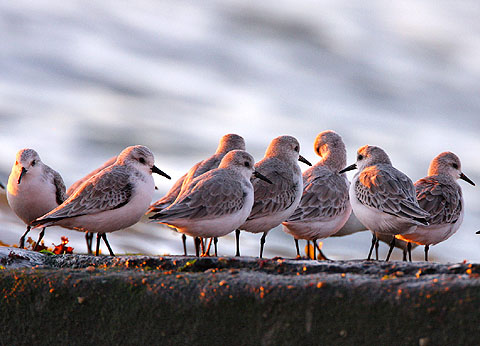Birds
and Plants of Kauai:
The Sanderling
by Linda Pascatore on 5 March 2008
The Sanderling is a small sandpiper which can be seen chasing the waves on Kauai’s shores. In Hawaii it is known as the Hunakai. The name means “sea foam”, as the Hunakai swiftly runs back at the edge of the approaching breaker, then forward along the receding wave, probing in the wet sand for exposed crustaceans and mollusks.
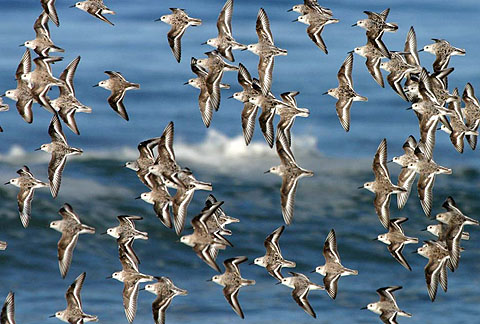
The Sanderling is one of the most widespread wintering shorebirds in the world. It is found on nearly all temperate and tropical sandy beaches throughout the world. Among shorebirds, only the Ruddy Turnstone and the Whimbrel rival its worldwide distribution.
The Sanderling, or calidris alba, is about 8 inches long, it has a gray and white back and white underbelly and black legs and beak. It has a wide, white wing stripe, and a black line on the rump to the tail. The bird looks white from a distance. It is distinguished from other wading birds by its lack of a hind toe, which makes it a stronger runner. The male and female have similar plumage, with the male being brighter or more deeply colored. The Haunkai makes a soft
“wick, wick” sound, as well as twittering when in a flock.
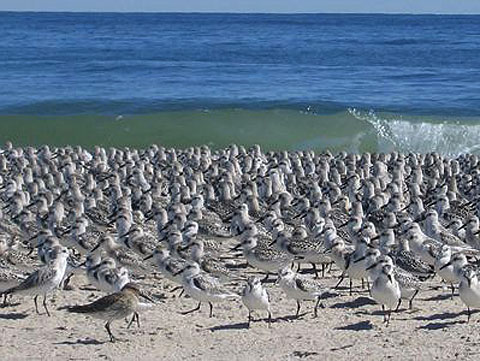
image above: An unusually large flock of Sanderlings at Riis Park NYC. Photo by Rob J.
They can be observed individually, or in small groups, feeding along the shore. It can also be found in mud flats and intertidal rocky areas. During the winter months here, their diet consists of small crabs, isopods, insects, worms, and mollusks.
The bird is migratory, and is one of the most widespread shorebird. It winters on Kauai, as well as in many other tropical and temperate locations. Here it can be seen on beaches and flooded pastures from October through June. Sanderlings breed in the arctic during the summer months, where they eat insects. They have a reddish brown breeding plumage.
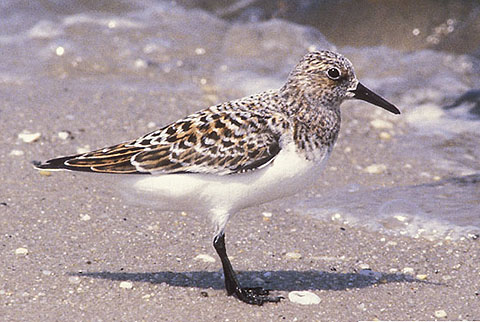
image above: Breeding age adult Sanderling phogographed by J. R. Woodward
It is common for nonbreeding individuals of Arctic-breeding shorebirds to remain on the wintering grounds through the summer. Why make that long trip if you're not going to breed anyway? Many Sanderlings remain in South America without breeding, but only small numbers remain along the North American coasts.
The mating system of the Sanderling appears to vary among areas, and possibly also among years. It is predominantly monogamous, but occasionally the female lays eggs for several different males in quick succession.
Sanderlings nest on the ground, in exposed well drained sites, in a shallow, scraped out nest lined with leaves. They usually lay 4 eggs. Both sexes care for the eggs. Young hatchlings are able to feed themselves immediately.
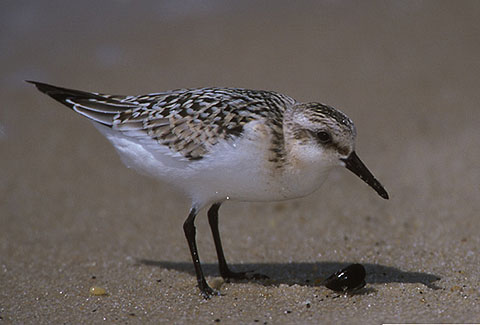
image above: Sanderling juvenile feeding. Photo by Kevin T. Karlson
The major threats to the Hunakai in Hawaii is loss of shoreline habitat, and avian diseases. Global warming may also reduce their aquatic winter food supply.
Description:
Small pale sandpiper with broad white wingstripe bordered in black, visible in flight.
Size:
18-20 cm (7-8 in)
Wingspan:
35 cm (14 in)
Weight:
40-100 g (1.41-3.53 ounces)
Sex Differences:
Sexes look similar, with male averaging brighter.
Sound:
Call a soft "wick wick." Twittering in flocks. On breeding grounds male gives frog-like calls in flight.
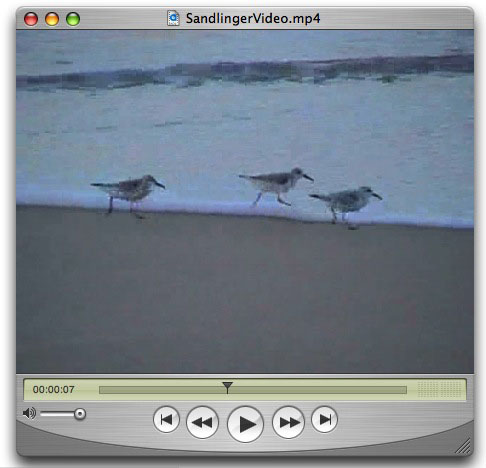
video above: Click on image to see Sanderlings on Kauai. Filmed by Juan Wilson at Polihale
|
